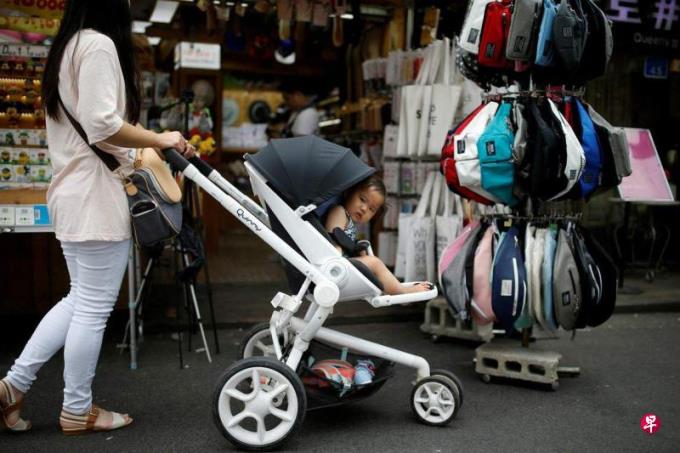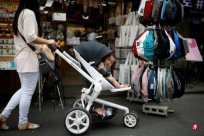
(Seoul Composite Electric) The number of newborn in South Korea in 2023 in the world's lowest fertility rate fell to a new low, a year -on -year decrease of 7.7 % to 230,000.This exacerbates the crisis of fast aging South Korea.
The data released by the South Korean Department of Statistics on Wednesday (February 28) shows that the fertility rate rate of Korean women (the number of children expected to have children) from 0.78 in 2022 to 0.72 in 2023, a decrease of 8 %.Following 2021 (0.81) and 2022 (0.78), it continued to slip down.
0.72 This number is far lower than the 2.1 fertility rate required to maintain the current 51 million population.Experts estimate that according to this fertility rate, the population will be reduced by nearly half by 2100.
The South Korean government has invested about 36.0 trillion won (S $ 362.9 billion) in 2006 to provide cash allowances, babysitter services and infertility treatment, etc., trying to encourage the national children to have more children, but the fertility rate continues to explore.The fertility rate decreased for eight consecutive years after the top of 2015 (1.24), and the decline continued to expand.The fertility rate in the fourth quarter of last year was 0.65, a falling below 0.7 for the first time; the number of newborns decreased by 6.9 % year -on -year to 52,618.
Lin Rongyi (transliteration) of the Director of the Census Division of the South Korean Department of Statistics said: "Number of newborns, birth rates, and rough birth rates (Crude BIRTH RATE, the number of newborn per thousand people) is in 1970 since the collection of data began in 1970The lowest point " He told reporters that the birth rate of 0.72 in South Korea is the lowest of the Economic Cooperation and Development Organization (OECD) countries, while the average fertility age of women is 33.6 years old, and the average of 29.7 years old is higher than the Economic Organization.
South Korea's rough birth rate drops from 4.9 in 2022 to 4.5 in 2023.Since 2018, South Korea has the only country among the members of the OECD.
Since 2020, the phenomenon of negative number of newborns has reduced the number of newborns in South Korea for four consecutive years.
The number of marriages in 2022 is 42 % less than 10 years ago
South Korean society regards marriage as a prerequisite for fertility, but South Korea ’s marriage rate is also declining. In 2022, about 192,500 newcomers married, 42 % less than 10 years ago.
The main reason why Korean couples are unwilling to have fertility is that the economic burden is too heavy, and women are also worried that they may not be able to return to the workplace to earn the same level of salary after childbirth.
Li Changzhang, president of the Central Bank of Korea, pointed out that a low fertility rate means that the labor population will decrease and reduce consumption power, which is not good for economic development.
The decline in fertility rate has continued to expand the concerns of the country's demise.Delaid also means that the number of soldiers is reduced, which is not good for South Korea to respond to the North Korean army with an estimated number of soldiers.
According to World Bank data, in 2020, South Korea is the first country in 252 countries and regions in the world to be less than 0.9.The Department of Statistics was calculated last year that the fertility rate in 2024 was 0.68.




